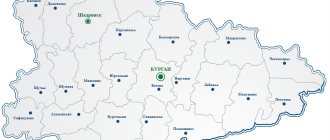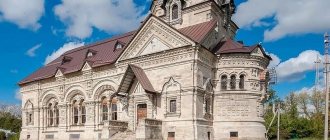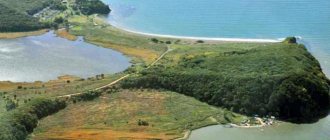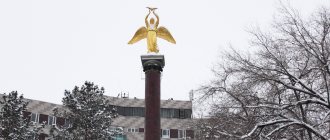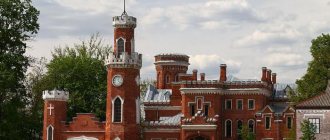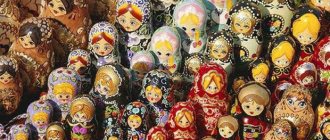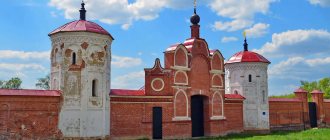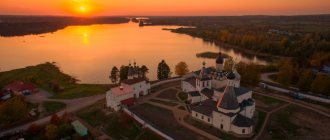In the southern part of the West Siberian Plain, the Kurgan region is located - one of the constituent entities of the Russian Federation. It occupies a flat territory with a total area of more than 70 km2. On the satellite map of the Kurgan region you can see the areas bordering this region:
- Chelyabinskaya;
- Tyumen;
- Sverdlovskaya;
- Kostanayskaya (Kazakhstan).
The region has an elongated shape along the Kazakhstan border. About 500 large and small rivers and streams flow through its territory. On the map of the Kurgan region by district, you can examine in detail the entire hydrographic network of the region, which belongs to the Tobolsk basin.
Of particular interest are the numerous lakes in the region, which are formed by flat lowlands (saucers). The total number of reservoirs is close to 3000. Most of the lakes consist of fresh water, but there are also salty reservoirs, the level of salt concentration in which is equal to the reservoirs of the best health resorts and resorts in the country.
Significant lakes, which can be seen on a map of the Kurgan region with diagrams:
- Eadgilds;
- Manyass;
- Okunevskoe
- Black;
- Half.
The healing lake in the region is Medvezhye. At its bottom, sulfide muds were found, which are used in the treatment of joint diseases and skin problems. In terms of its properties, Bear Lake is equated to the Dead Sea.
Looking at the areas on the map of the Kurgan region, you can find many interesting places, resorts, large and small cities, and settlements.
What holiday is it today?
09 February 2022, Wednesday
Today are holidays and events: Aeroflot's birthday International Dentist Day Memorable date in Russian military history: The feat of the cruiser Varyag Tomorrow: Diplomat's Day
Today is an Orthodox holiday: Transfer of the relics of St. John Chrysostom, Archbishop of Constantinople... Tomorrow: St. Ephraim the Syrian. Venerable Ephraim of Novotorzhsky. Venerable Ephraim of Pechersk, Bishop of Pereyaslavl. Venerable Theodosius of Totem, the head and founder of the Spasosumorin monastery...
Today is a national holiday: Chrysostom's Fire... Tomorrow: Ephraim's Day...
Seasons
Seasons, four periods of the year (spring, summer, autumn and winter) characterized by certain average temperatures. The period during which the Sun passes through one of these sectors is called the season. Spring in the Northern Hemisphere and autumn in the Southern Hemisphere begin when the Sun passes through the initial circle of declination and its right ascension is 0° (vernal equinox). Summer in the Northern Hemisphere and winter in the Southern Hemisphere occur when the sun's right ascension is 90° (summer solstice). Autumn in the Northern Hemisphere and spring in the Southern Hemisphere begin when the sun's right ascension is 180° (autumnal equinox). The beginning of winter in the Northern Hemisphere and summer in the Southern Hemisphere is considered to be the winter solstice, when the direct ascension of the Sun is 270°... Next: Seasons. Russian folk calendar. Monthly words...
Folk calendar about every day
Every day one season always replaces another and this determines a person’s way of life. In connection with this, a folk calendar was formed in which there were practically no nameless, unmarked days. Every day was special, had its own purpose. All this was determined by climate conditions and astrological phenomena.
A calendar is a system for counting periods of time. The first calendars arose a long time ago, in ancient times, because there was a need to measure time. The word calendar comes from the Latin words caleo - to proclaim and calendarium - debt book. This is due to the fact that in Ancient Rome the beginning of each month was especially proclaimed, and because it was customary to pay debts on the first day of the month. Different peoples counted time differently. Some calendars are based on the changing phases of the moon - lunar calendars; in others - the change of seasons - sunny; in others, the length of the year was coordinated with the change of seasons, and the counting of months was associated with the phases of the Moon. Such calendars are called lunisolar.
In Rus', the calendar was called a monthly calendar. Every day, the month book covered the entire year of peasant life, “describing” day by day, month after month, where each day had its own holidays or weekdays, customs and superstitions, traditions and rituals, natural signs and phenomena. The cyclical nature of the calendar is reminiscent of human life, where spring is youth, summer is heyday, autumn is the time of harvesting fruits (it’s good if there are some, otherwise you can live your life without collecting fruits), winter is the time of wisdom and peace. This cyclicality and rhythm determined the way of life of the farmer. The folk calendar was an agricultural calendar, which was reflected in the names of the months, folk signs, rituals and customs. Even the determination of the timing and duration of the seasons is associated with real climatic conditions. Hence the discrepancy between the names of the months in different areas... Next: Folk calendar...
Kurgan regionThe Kurgan region is an amazing place for eco-tourism and recreation. This territory can be called one of the flattest places on the planet. The endless feather grass steppes and wheat fields in the south of the region give way to picturesque birch groves in the central part of the region. The real taiga begins in the north. There are a lot of wild berries in the forests and meadows: strawberries, wild strawberries, lingonberries and cherries, and various types of mushrooms also grow in abundance.
Arriving in this region, you should definitely visit the unusual forests of the Trans-Urals. Dry forests will surprise you with the unique beauty of “mast pines”, among which you feel as if you are in a huge columned hall.
The unusual poplar groves located along the Tobol River will surprise you with their huge, thick, century-old trees. Such groves are reminiscent of the magical forests from Row's fairy tales.
Bird cherry groves are especially beautiful during the spring flowering period. The combination of white bunches of bird cherry and bright greenery, thick sweet aroma, will make a visit to this forest unforgettable.
The Iryum spruce forests, located in the north of the region, are the kingdom of real taiga. The abundance of rare mosses and ferns, vines and orchids make these forests real protected areas, untouched by humans. It is into these forests that the largest predator in Western Siberia, the bear, comes from the north.
Linden forests, unusual for Siberia, are located on the peninsulas of Lake Medvezhye; scientists believe that these forests remain from the Ice Age. At the beginning of summer, here you can admire the blooming of a rare wild peony - Maryina root.
Trans-Urals can be called the land of lakes. There are more than 3,000 lakes on its territory; there is no place on the planet where so many bodies of water differ in composition: mineral, bitter, salty, fresh and even alkaline.
The most famous lake in the region is Medvezhye, it is also called the Dead Sea of the Trans-Urals. The water and mud of the lake have a b o
greater value than the saltiest sea on the planet.
There are many resorts and tourist centers in the region that welcome residents of the Urals and guests of our region all year round.
The region is also interesting for history buffs. Here you can see thousands of mounds - the heritage of the semi-nomadic Sargat tribes. In the cities of the region there are many monuments of merchant culture: mansions, trading shops and industrial buildings. Of particular interest are the local history museums located in almost all regional centers of the region, where you can get acquainted in detail with the history, culture and way of life of the region.
Temple architecture can be seen in many villages of the region. Here you can find both traditional wooden and stone temples, as well as rare for these places temples in the Ural and Ukrainian Baroque style.
The region is also attractive for event tourism. There are many national Bashkir, Tatar and Russian holidays held in the region.
History of the Kurgan region
The history of the Kurgan region originates in the ancient history of the Trans-Urals. The first people appeared here in the Paleolithic era, more than 11 thousand years ago. Of the more recent archaeological sites, the most interesting is the Savin-1 sanctuary (Belozersky district), similar to the famous Stonehenge. There are more than a thousand unique archaeological structures in the region - mounds, ancient burials. One of them is Tsarev Kurgan, which gave the name to the current regional center.
In the 13th century, the territory of our region was part of the sphere of influence of the Golden Horde, and later - part of the Siberian Khanate. Before the arrival of the Russians, four main ethnic groups lived here - Tatars, Bashkirs, Kalmyks and Kyrgyz-Kaisaks (ancestors of the Kazakhs). During the process of Russian colonization of the Trans-Urals, starting from the 15th century, industrial settlements were gradually created along the local trade routes - settlements, winter huts, military forts. The settlement of Trans-Urals by Russian people became active only after the fall of the Kazan and Astrakhan khanates, when in 1586 troops under the command of Ermak defeated the horde of Khan Kuchum. From that time on, the Trans-Urals became part of the Russian state.
The first large settlement of the Southern Trans-Urals was the Dalmatov Monastery, founded in 1644, which soon became the largest economic center of the Trans-Urals. In the early 60s of the 17th century, a small fort was built on the territory of the current city of Kurgan, called the Tsar's settlement. In 1782, by decree of Catherine II, Kurgan was given the status of a city. Simultaneously with Kurgan, the foundation of the city of Shadrinsk was laid. By the middle of the 19th century, the Kurgan district in terms of population took second place in Siberia after Ishim. The fate of 15 Decembrists - participants in the uprising on Senate Square on December 14, 1825, who served exile in Kurgan at various times over a period of 27 years - from 1830 to 1857, was connected with the Kurgan land.
By the end of the 19th century, the Kurgan region was characterized by the growth and strengthening of various industrial sectors. The largest were the distillery, brewery and flour mills of D.I. Smolina. Already in the late 80s of the 19th century, a telegraph station successfully operated in Kurgan, and in 1893-1894 a railway was built, which contributed to an unprecedented economic boom.
From 1923 to 1933, our region was part of the Ural region. In January 1934, the Ural region was divided into three: Sverdlovsk, Chelyabinsk and Ob-Irtysh (later it became known as Tyumen). Most of the territory of the modern Kurgan region then became part of the Chelyabinsk region.
During the Great Patriotic War, evacuated factories and factories were located on the territory of the region - the Gomel Agricultural Engineering Plant, the Moscow Radio Plant, the Odessa Knitting Factory, Cherkassy and many others. The Trans-Urals also hosted the Poltava Agricultural Institute, the Chelyabinsk Regional Drama Theatre, and the funds of a number of central state archives were kept in Kurgan.
On February 6, 1943, the Presidium of the Supreme Soviet of the USSR issued a Decree “On the formation of the Kurgan region as part of the RSFSR.” The region included 32 agricultural districts of the eastern part of the Chelyabinsk region and 4 districts of the Omsk region with a total population of 975 thousand people.
Geography
The Kurgan region is located at the junction of the Trans-Urals and Western Siberia, on the West Siberian Lowland. The territory of the region is 71.5 thousand square meters. km, length from west to east - 430 km, from north to south - 290 km. The relief is flat with a slight decline to the northeast.
Almost the entire territory of the region is located in the Tobol River basin, and only the eastern regions belong to the Tobol-Ishim interfluve and are a drainage zone. About 450 large and small rivers flow in the Kurgan region with a total length of more than 5,000 kilometers. There are more than 3,000 lakes in the region of different composition: fresh, salty, bitter-salty, alkaline.
The territory of the region can be divided into three main natural zones: the south – virgin steppes, the central part – forest-steppe, the north – subtaiga forests.
The main forests of the region are: pine forests, birch and aspen groves; poplar, bird cherry and linden groves are less common.
The fauna of the Kurgan region combines forest, steppe and forest-steppe species of animals. The region is home to 64 species of mammals, 278 species of birds, 7 species of reptiles, 9 species of amphibians, 27 species of fish, and over 2 thousand species of invertebrates.
The location of the Kurgan region in the depths of a huge continent determines its climate as continental. It is remote from the warm seas of the Atlantic Ocean, fenced off from the west by the Ural Range, located close to the center of the continent, completely open on the north side and very little protected from the south. Therefore, both arctic cold masses and warm dry masses from the steppes of Kazakhstan easily penetrate into the territory of the region, which leads to unstable meteorological conditions. Continental air masses of temperate latitudes coming from Eastern Siberia have a great influence on the climate.
The Kurgan region has rich mineral resources. A significant role in the mineral resource base of the region is played by deposits and manifestations of uranium ores, bentonite clays and estimated resources of metallic minerals, including iron, tungsten-molybdenum ores, titanium-zirconium placers. The region has practically inexhaustible reserves of medicinal mud, mineral waters, peat and sapropels, large reserves and resources of common minerals (quartz porphyry, liparites and basalts, construction sand, sand-gravel rocks, brick-tile, expanded clay) used in the production of construction materials. materials.
Nature
The Kurgan region lies within the forest-steppe zone of Western Siberia. The north of the Kurgan region is gradually moving into the subtaiga zone. In the south there are sections of northern steppes.
Birch forests. Forests occupy about 1,475 thousand hectares, which is 21% of the region's territory. Among the forested area, birch forests predominate (60%), over 30% are in pine forests, and about 10% are in aspen groves and poplar groves. Small-leaved forests are represented by birch and birch-aspen forests. Depending on their origin, birch forests can be divided into three large groups.
Birch forests in the northern regions are classified as subtaiga. Over time, the spruce forests retreated, and their place was taken by birch forests, under the cover of which a large group of taiga plant species has survived to this day.
The second group consists of birch depressions typical of the forest-steppe. Their origin is associated with the development of forests on the site of swampy lakes. Sometimes such pegs in the central part are occupied by a lake or sedge swamp.
The third group is the birch groves of the plains and elevated areas of the forest-steppe. Such forests appeared in areas previously occupied by steppe vegetation. Under the birch canopy the following are common: rose hips, willows (gray, goat, Siberian), steppe cherries, currants (downy and black), and other types of shrubs. The grass cover of birch groves is dominated by meadow-forest and marsh species: creeping wheatgrass, pinnate grass, meadow timothy, thin-leaved pea; in the wettest places there are reeds and various types of sedge.
Poplar groves. Formed by silver poplar, black poplar, aspen, and white willow, they are common in the Tobol floodplain. Under the canopy of poplar thickets comes a rich variety of water meadow grasses.
Pine forests. They are confined to ancient sand deposits along the main rivers of the region - Tobol, Iset and Miass. To the south of the latitude of Kurgan, pine forms relatively small areas of forest, extending in intermittent stripes to the border with Kazakhstan. So-called dry lichen forests are common here. There are thickets of fescue, cat's foot, wintering horsetail, and wormwood (silky, Austrian). In some places there are thickets of the king of coniferous forests - bracken fern. In the spring, as soon as the snow melts, snowdrops appear in the forests: dream grass (yellow lumbago) and anemone.
Pine and linden forests. The pine-linden forests located in the area of Lake Medvezhye are especially unique in that they are located more than 180 kilometers from the southern limit of linden distribution in Western Siberia.
Spruce forests. They are found only in the north of the Shatrovsky district and occupy small spaces among tracts of pine and birch forests. Under the canopy of the spruce forest, taiga plants predominate: horsetails (forest, reed), mosses (club-shaped, annual, oblate), various sedges, grasses (spreading boron, drooping pearl barley, soddy pike); single-flowered, wintergreens (round-leaved, small), alpine bipetal.
Treeless spaces. You can get acquainted with the virgin steppe, untouched by man, only in small strips along the edges of birch groves, and on lands that are inconvenient for use. In the most elevated and, therefore, dry and well-warmed areas, before plowing, there were chernozem steppes with a predominance of grasses (fescue, various types of feather grass, steppe timothy grass, branched hair grass, slender-legged gray grass) and forbs (speedwell, hybrid istod, steppe meadowsweet and common meadowsweet , silver cinquefoil, forest-steppe buttercup, Marshall's thyme, clubweed).
The fauna of the Kurgan region is very diverse. The fauna of the region combines forest, steppe and forest-steppe species of animals.
The following are recorded on the territory of the region: mammals - 64 species; birds - 252-268 species; reptiles - 6 species; amphibians - 8 species; fish - 27 species.
Of the mammals, 18 species are hunted; 1 species, the Russian muskrat, is listed in the Red Book of Russia. Among birds, 165 - 170 species are nesting, 70 species are migratory. During autumn migrations, up to 70 thousand individual birds gather on the lakes of the Makushinsky reserve. In the region, 24 species of birds listed in the Red Book of Russia occur and nest. Including 11 bird species that are globally threatened with extinction in Europe. White-headed duck, lesser white-fronted lesser white-fronted lesser white-fronted goose, lesser swan, and red-breasted goose are observed on migration; nests - Dalmatian pelican, avocet, stilt, lapwing, etc. The region is home to 5 species of insects listed in the Red Book of Russia (steppe racket, Apollo, bumblebees - Armenian, Shrenka, amazing).
Fishing calendar for every day
The fishing calendar should not be taken as an absolutely indisputable truth. Fish biting is greatly influenced by a whole range of natural factors, as well as the influence on the nature of man himself. You must not forget that the fish’s bite depends and is determined not only by the calendar dates and biological cycles of their life, reflected in the calendar, but also, no less, by the state of their habitat; the bite also depends on weather conditions: air and water temperatures, cloudiness, wind direction and strength, etc... Next: Fishing calendar...
Links
Articles
: Coat of arms | Anthem | History | Population | Territorial division | Flag
See what “Territorial division of the Kurgan region” is in other dictionaries:
Administrative-territorial division of the Kurgan region - According to the Law of the Kurgan Region dated December 27, 2007 N 316 “On the administrative-territorial structure of the Kurgan region”, [1] the following administrative-territorial units were formed in the Kurgan region: 24 municipal ... Wikipedia
Orthodox calendar about every day
Orthodox calendar: Orthodox, Church and Christian holidays.
The church year is an alternation of weekdays and holidays. On weekdays, a person is called to work “by the sweat of his brow to earn his bread.” Holidays are given in order to feel liberation, to rise above the bustle and routine of the world, to feel involved in the highest of worlds, “where there are no illnesses, sorrows and sighs, but endless life.” Since ancient times, holiday cycles have been associated with the seasons. The pagans associated them with the worship of the forces of nature, the cult of which in the Old Testament was replaced by gratitude to the Creator for the universe. And although the connection between holidays and the seasons has not completely lost its power, since God is present in everything, in the plant and animal world, in human works, it nevertheless faded into the background, giving way to a spiritual foundation built on the Sacred Scriptures. The history of Orthodox holidays dates back to the times of the Old Testament. Each of the Orthodox holidays is dedicated to the remembrance of the most important events in the life of Jesus Christ and the Mother of God, as well as the memory of saints... Next: Orthodox calendar...
Aviation Museum
Aviation Museum
Mound
The Kurgan Aviation Museum was founded in 1985. Here they talk about the history of aviation in the Trans-Ural region from 1912 to 2000. Among the exhibits are documents, photographs, awards and pilot uniforms.
In total, the exhibition of aviation equipment includes 15 aircraft, including various fighters: interceptors, bombers, attack aircraft. Also presented are models of aircraft on which employees of defense companies worked: Aviakhim, Osaviakhim, DOSAAF, ROSTO. In the fuselage of the Il-14T transport aircraft there is an exhibition of crew uniforms and equipment. During the sightseeing tour, visitors are told how the main types of aircraft are constructed and how experienced aviators fly the planes.
Russian folk calendar for every day
The word “sign” comes from the word “notice”, i.e. observe. As a result of observing what happens around a person every day, he accumulates life experience. This knowledge was passed down from generation to generation, carefully preserved and people trusted it as a sacred book. Many signs have come to us from the depths of centuries without losing their knowledge. Each of us is free to choose: to dismiss all this as an absurd superstition or to take a closer look at the signs and take the centuries-old experience of generations more seriously. Most of us, when taking exams, ask them to scold them, boasting about some kind of good fortune or luck, spit so as not to jinx them or knock on wood, take a detour if a black cat crossed the road, are afraid of the number 13 and much more. And who among us does not have lucky things, numbers? Who has never resorted to the help of fate at least once in their life, who has not believed in secrets? It’s as if everything connected with signs is hidden somewhere deep in our subconscious. Often we remember them mechanically, unconsciously, or just as a joke. But, undoubtedly, the signs contain a lot of accurate knowledge and practical wisdom of our ancestors. They cover all the characteristic, often difficult to perceive, natural phenomena. Signs have preserved a lot of what was in old folk holidays and customs; they help predict the weather, grow crops... Next: Folk signs...
Cities of Kurgan region
Kurgan (population: 325.5 thousand people) is the main city of the region. Founded in the second half of the 17th century on the Tobol River, the date of its foundation is still the subject of debate among scientists. But it is known for sure that Kurgan received the status of a city in 1782 by decree of Empress Catherine II. Kurgan became a major industrial center of the Trans-Urals. Enterprises of mechanical engineering, chemical industry, metallurgy and other industries operate here. All this has a terrible impact on the ecology of the city. For this reason, and also because of the old, crumbling infrastructure, the high level of crime and the lack of prospects for the younger generation, Kurgan is one of the least livable cities in Russia.
Shadrinsk is the second largest city in the Kurgan region (population 77,407 people). Founded in 1662 by Russian explorers. Shadrinsky district was agricultural and supplied the entire Urals with bread. In the 19th century, the city became a center of trade and small business. Handicraft production flourished here, and the first porcelain factory in the Urals operated for a long time.
During the years of industrialization, an iron foundry, a mechanical plant and a food processing plant were built here. Today, many enterprises of various profiles operate here. Among the largest are the Shadrinsky Automotive Aggregate Plant, the largest manufacturer of radiators for cars, as well as the Shadrinsky Milk and Canning Plant, part of the Unimilk holding. These two enterprises provide 70% of the industrial output of Shadrinsk.
Not far from the city there is the Shadrinskoye mineral water deposit, which is unique in the Ural Federal District. One of the city’s problems is the tense environmental situation caused by the work of industrial enterprises, oil depots and the abundance of vehicles.
Holiday calendar, dates and events of the year
All state and professional holidays in Russia, including significant World and International holidays, and other equally interesting holidays and events about every day.
The holiday has always kept pace with the history of mankind. Social time can be divided into three types: everyday life (weekdays), weekends and holidays. Everyday life is a series of practices repeated day after day and every day (work). Weekends are regular breaks from the rush of everyday life. It is believed that on weekends a person should restore his strength after working days. Day off, non-working day. A holiday is a day of celebration established in honor or in memory of someone or something. A day or series of days celebrated by the church in memory of a religious event or saint... Next: Calendar...
Prayer book, Orthodox prayers for every day
Prayer is the most powerful means for healing all illnesses - both physical and mental. Prayers can be laudatory or grateful, petitionary and repentant. If we have offended God, sinned, we must ask Him for forgiveness, that is, repent. Such prayers are called repentant prayers. If everything is fine with us, if we and our loved ones are healthy and prosperous, if we have a place to live, something to wear, something to eat, we must glorify and thank God for this. Such prayers are called praise or thanksgiving. If some misfortune, illness, trouble or need happens, you need to ask God for help. Such prayers are called petitionary... Next: Orthodox prayers...
Zodiac, astrological, eastern calendar. Zodiac signs
In ancient times, to establish the calendar, priests used knowledge of the positions of all the planets. Before the reform of Peter 1, the New Year was celebrated on the Day of the Autumn Equinox. On this day, according to ancient legend, the most peaceful treaty was concluded between the Great Race (ancient Slavs) and the Great Dragon (ancient Chinese) and it was approximately 7518 years ago... For the ancient Slavs, the calendar month corresponded to the lunar cycle from new moon to new moon, taking into account such Thus, the relationship of the entire annual cycle with astronomical and natural phenomena. There was no coherent calendar system. The main natural phenomena are still considered to this day to be the days of the solar equinox and solstice - the Slavic holidays Maslenitsa, Kupala, Ovsen and Kolyada. But during the time of Peter 1, all ancient Slavic calendars were abolished and a new Western European calendar from the Nativity of Christ (Julian calendar) was introduced, while the beginning of the calendar was moved to January 1. The Julian calendar (old style) did not take leap days into account and accumulated one extra day every 128 years. After the October Revolution in 1918, the Gregorian calendar (new style) was introduced in Russia, according to which an amendment of 13 days was introduced. The calendar of the ancient Slavs was based on two planets: the Sun and the Moon. And now they don’t use anything at all. The calendar has become static. There is no such thing as the calendar, it turns out, resting on some planet. Nobody even knows about it. There are just some standard numbers, there are months and holidays. The calendar is based on the Sun and Moon. Why is this so? Because these two luminaries influence the Earth. The Earth revolves around the Sun, and the Moon revolves around the Earth. And these two luminaries create the atmosphere on the planet. From here the calendar is built... Next: Astrological calendar...
Famous people
| This section do not quote any sources . |
- Yuri Balashov (born March 12, 1949), chess grandmaster.
- Oleg Bogomolov (born October 4, 1950), former governor of the Kurgan region.
- Fyodor Bronnikov (1827–1902), artist
- Dmitry Bushmanov (born 30 September 1978), association footballer
- Alexander Cherepanov (November 21, 1895 - July 6, 1984), lieutenant general.
- Dumitru Diacov (born 10 February 1952), Moldovan politician
- Viktor Dubynin (February 1, 1943 - November 22, 1992), army general.
- Maxim Fadeev (born May 6, 1968), singer-songwriter, composer and producer.
- Pavel Fitin (December 28, 1907 - December 24, 1971), director of Soviet intelligence.
- Philip Golikov (July 30, 1900 – July 29, 1980), Marshal of the Soviet Union.
- Sergei Gritsevets (July 19, 1909 - September 16, 1939), major, pilot, twice awarded the honorary title Hero of the Soviet Union.
- Gavriil Ilizarov (June 15, 1921 - July 24, 1992), doctor
- Vyacheslav Kamoltsev (born 14 December 1971), association footballer
- Svetlana Kapanina (born December 22, 1968), pilot pilot.
- Anatoly Karelin (July 16, 1922 - January 3, 1974), Major General of Aviation.
- Leonid Khabarov (born May 8, 1947), colonel
- Larisa Korobeynikova (born March 26, 1987), fencer.
- Evgeniy Krasilnikov (born April 7, 1965), volleyball player.
- Leonid Krasin (July 3 (15), 1870 - November 24, 1926), politician and diplomat.
- Ivan Kurpischev (born March 2, 1969), powerlifter.
- Dmitry Loskov (born 12 February 1974), association footballer
- Alexey Merzlyakov (March 22, 1778 - August 7, 1830), poet, critic, translator, professor.
- Yana Romanova (born May 11, 1983), biathlete.
- Sergei Rublevsky (born October 15, 1974), grandmaster
- Mikhail Ryumin (September 1, 1913 – July 22, 1954), deputy head of the Ministry of State Security (Soviet Union)
- Yulia Savicheva (born February 14, 1987), singer
- Ivan Shadr (February 11, 1887 - April 3, 1941), sculptor, medalist.
- Alexander Solonik (October 16, 1960 - January 31, 1997), killer
- Elena Temnikova (born April 18, 1985), singer
- Alla Vazhenina (born May 29, 1983), weightlifter
- Alexander Vinogradov (September 9, 1930 - June 14, 2011), journalist and writer.
- Sergei Vinogradov (April 16, 1958 - December 16, 2010), journalist, translator and writer.
- Evstigneev Kirill Aleksandrovich (February 17, 1917 - August 29, 1996), Major General of Aviation.
Dream books online, interpretation of dreams
A dream book is nothing more than an interpreter of dreams and dreams, a translator of dreams. Since ancient times, people have been using dream books; dreams have always been given great importance, and people have often noticed the prophetic properties of some dreams. The dream book can become your faithful assistant every day and throughout your life, thanks to the dream interpreter you can always make the right decisions, the dream book will help you resist temptations in time, and will warn you against wrong steps and frivolous actions. Further…
